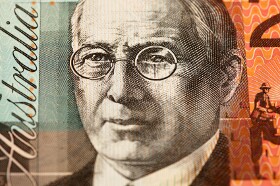The Australian dollar continued to rise today following yesterday’s rally. The rally was a result of a very positive employment report that showed a bigger-than-expected employment growth and an unexpected drop of the unemployment rate.
Released yesterday by the Australian Bureau of Statistics, the report showed that employment rose by 39,900 in November, exceeding the consensus forecast of an increase of 14,500 by a wide margin. Both full-time and part-time employment registered an increase, though the bulk of the increase consisted of part-time jobs. The number of full-time jobs increased by 4,200, while part-time employment climbed by 35,700. The unemployment rate fell from 5.3% in October to 5.2% in November, whereas analysts had predicted it to stay unchanged. On the negative side, the October drop got a revision from 19,000 up to 24,800.
With very few economic reports scheduled for the coming weeks due to holidays, the Australian dollar will be reacting mostly to global events. The most important of them will be the trade conflict between the United States and their trading partners, including China and the European Union, and the potential impeachment of US President Donald Trump. China will release its official manufacturing and services PMIs on December 31. The Asian nation is the biggest trading partner of Australia, therefore its economic indicators tend to have a noticeable impact on the Aussie.
AUD/USD edged up from 0.6885 to 0.6891 as of 9:20 GMT today, though it retreated from the daily high of 0.6900. EUR/AUD declined from 1.6145 to 1.6129, while AUD/CHF climbed from 0.6735 to 0.6754.
If you have any questions, comments, or opinions regarding the Australian Dollar, feel free to post them using the commentary form below.
Australian Dollar Extends Rally Caused by Stellar Employment Data
